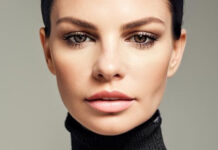
The ins and outs of preservatives in your beauty products
By Ken Dixon
While consumers, manufacturers, and retailers alike are hyperaware of preservatives in food and beverage products, these additives are often looked over in the cosmetic industry. Often, when looking at beauty products, we glaze over the non-medicinal ingredients (NMIs), focusing instead on their key active ingredients.
That being said, it is often these ingredients that may cause unwanted reactions—both allergic and otherwise—upon use. As such, it is imperative that companies consider both the efficacy and safety of the preservative they are using.
The Usual Suspects
Many cosmetic companies use chemical preservatives to keep their products free from bacteria and increase their shelf life. However, some these substances may directly cause allergic reactions, skin irritation, or very serious side effects.
The most common preservatives found in today’s cosmetics are:
- Parabens
Due to their price-friendly nature and effective protection against fungal growth, parabens are the most widely-used preservative on the cosmetics market. Since 2004, they have been under scrutiny, as a small U.K. study found traces of these substances in women with breast tumours. While the study was inconclusive about the ability of parabens to cause cancer, it has created a mass frenzy on the consumer level.
- BHA and BHT
BHA (butylated hydroxyanisole) and BHT (butylated hydroxytoluene) are often used as preservatives in lipsticks, moisturizers, and other cosmetics. These synthetic antioxidants may cause allergic reactions, and have been found to interfere with hormone function. BHA has also been labelled as a possible human carcinogen by the International Agency for Research on Cancer.
- Formaldehyde Releasers
These preservatives are effective in microbial inhibition. They work by slowly releasing formaldehyde into products as they age, helping to keep bacteria at bay over time. However, while formaldehyde is an effective preservative, it is a carcinogen, and is toxic to both the immune system and the nervous system.
- Phenoxyethanol
Considered a milder alternative to traditional preservatives, phenoxyethanol is known for its bacterial efficacy. However, it has been found to irritate the eyes, skin, and lungs, and may be a potential cause of organ system toxicity. Additionally, it may present carcinogenic activity.
THE ALTERNATIVES
Many commercially-made cosmetic brands are now offering non-preservative or preservative-free manufacturing.
According to David C. Steinberg, the author of Preservatives in Cosmetics, essential oils may be used as an alternative to preservatives. These substances are naturally antimicrobial, and have been successfully used to maintain the integrity of certain cosmetic products. Popular choices include grapefruit seed extract and other citricidals.
Additionally, substances like benzoic acid, sorbic acid, levulinic acid, and anisic acid are considered natural replacements for preservatives, although they are often made synthetically. They are effective against the formation of fungi, and also help to prevent bacterial infection.
All in all, it’s important to be aware of the ingredients in your cosmetic products as they can contribute to your overall wellbeing. For health-conscious individuals, being mindful of what you expose your body to can make all the difference in working towards wellness. Educating yourself on alternative ingredients—and seeking out natural or organic cosmetic brands—is one way to take control of your health.











